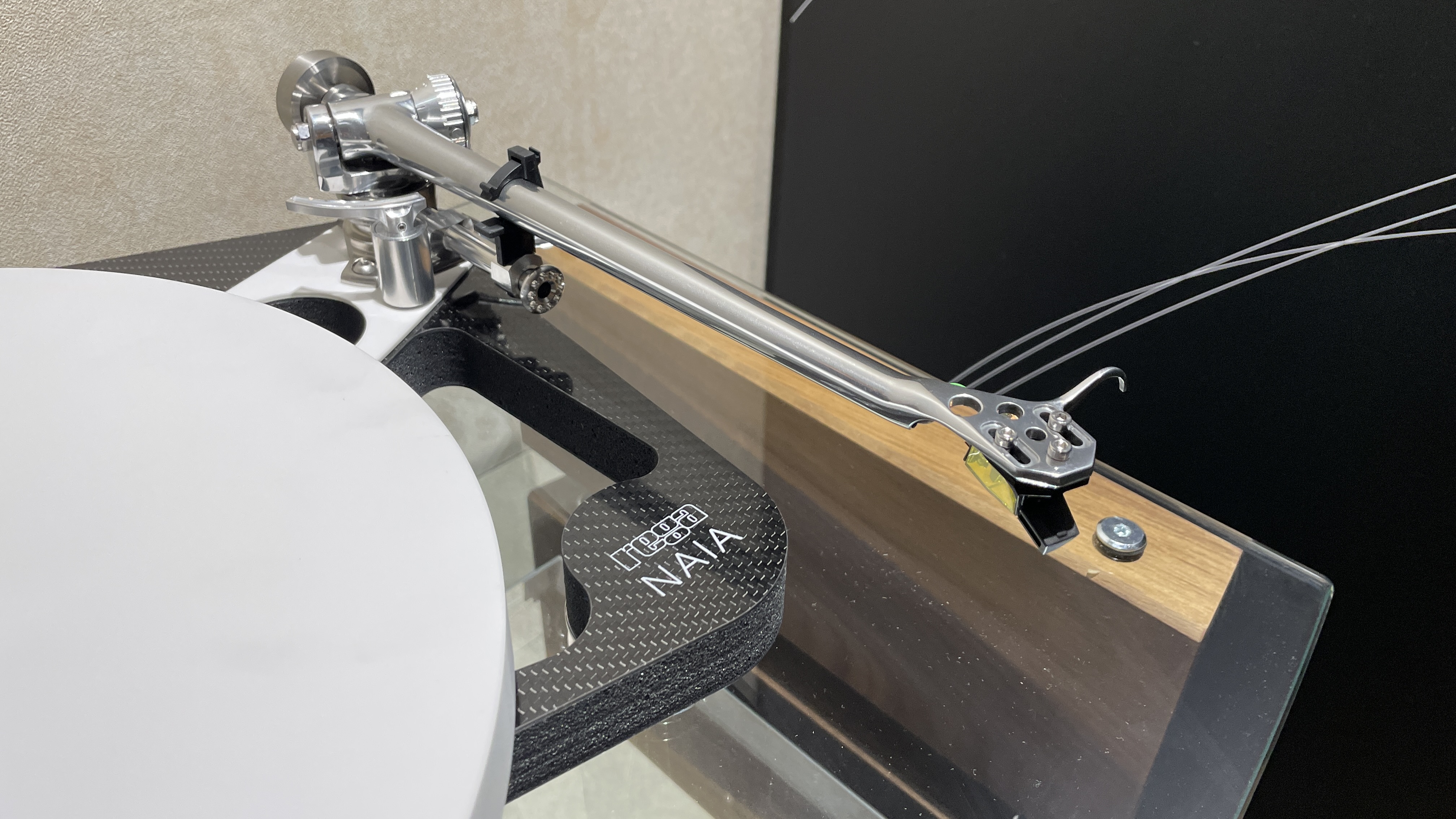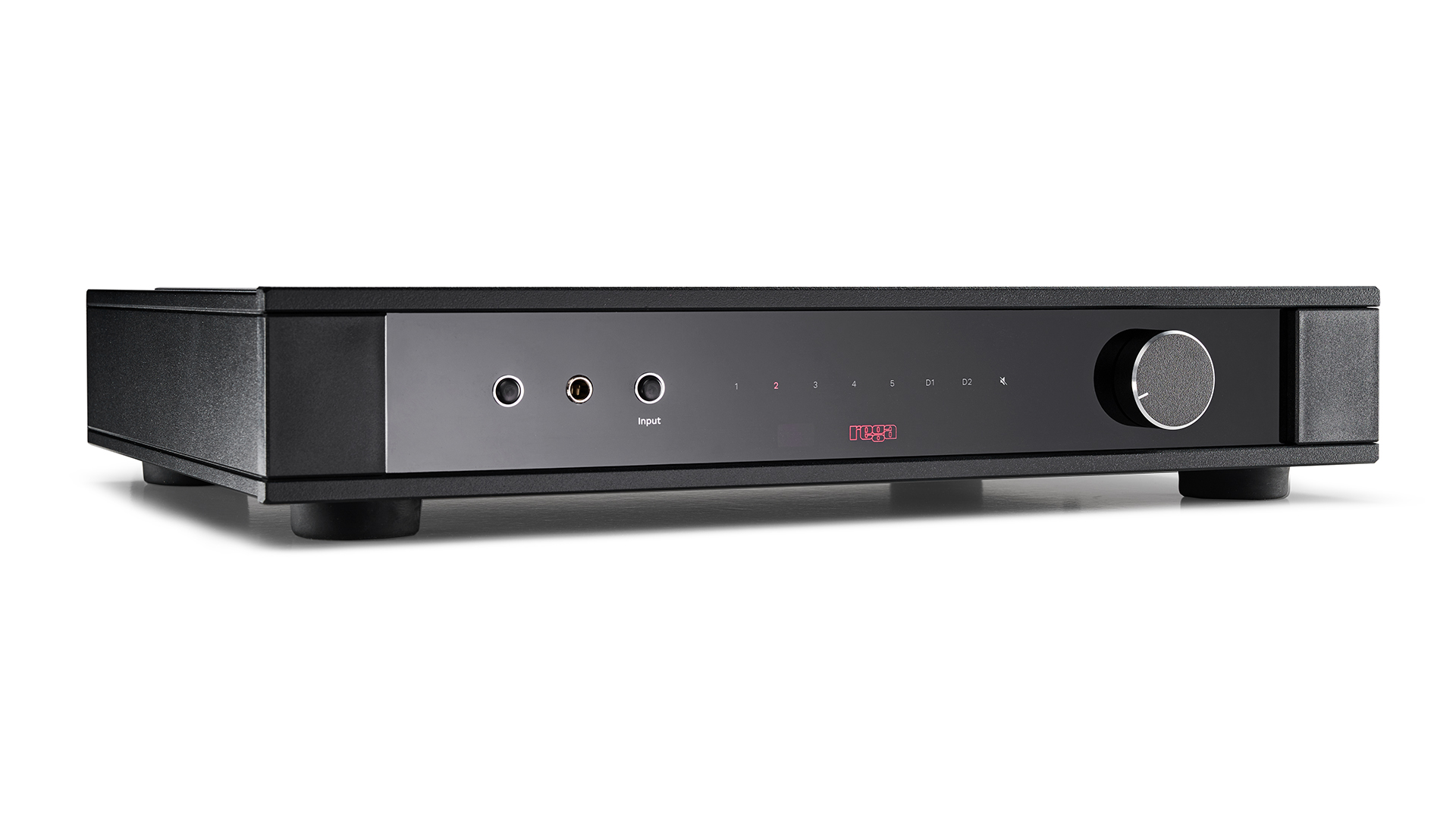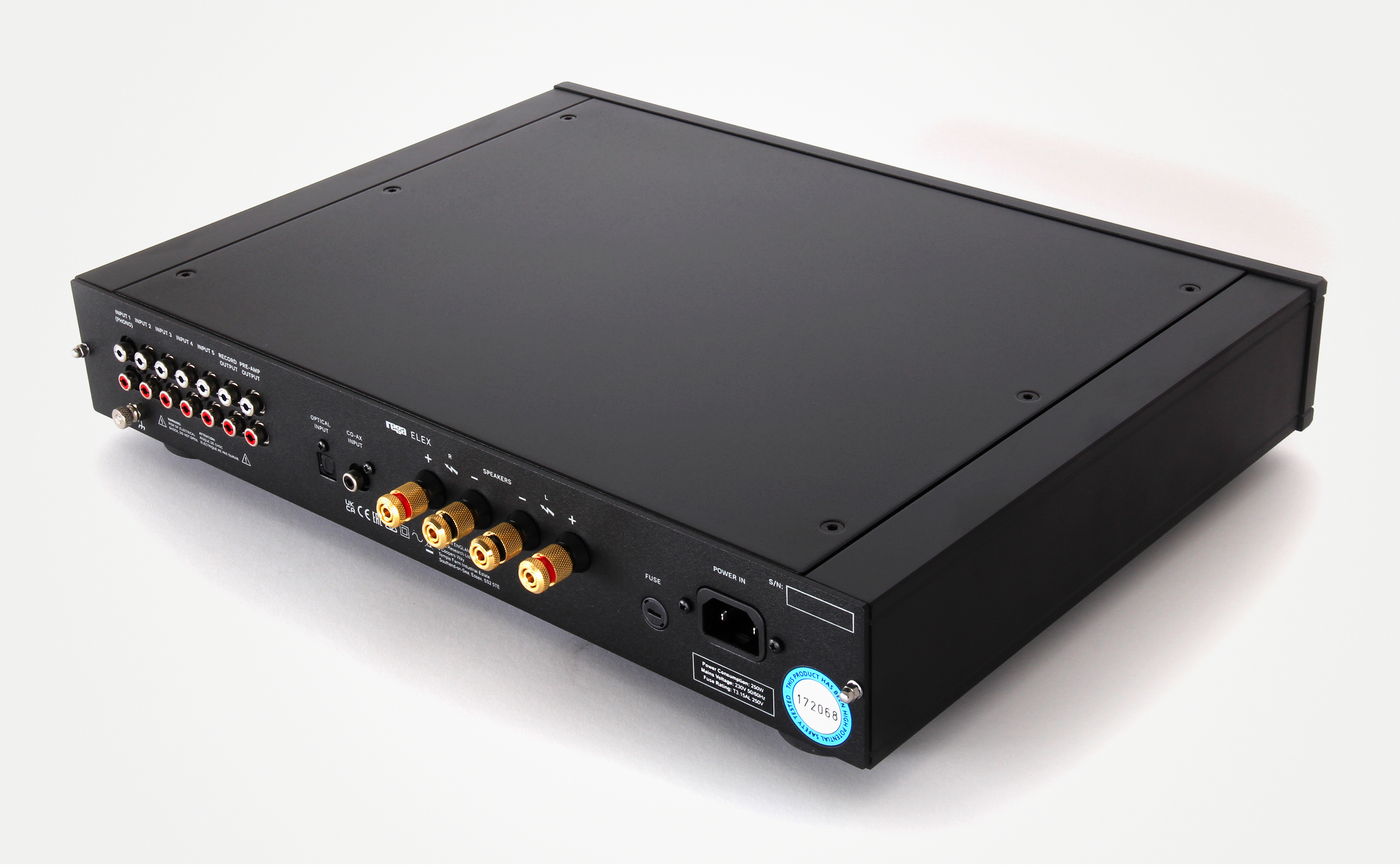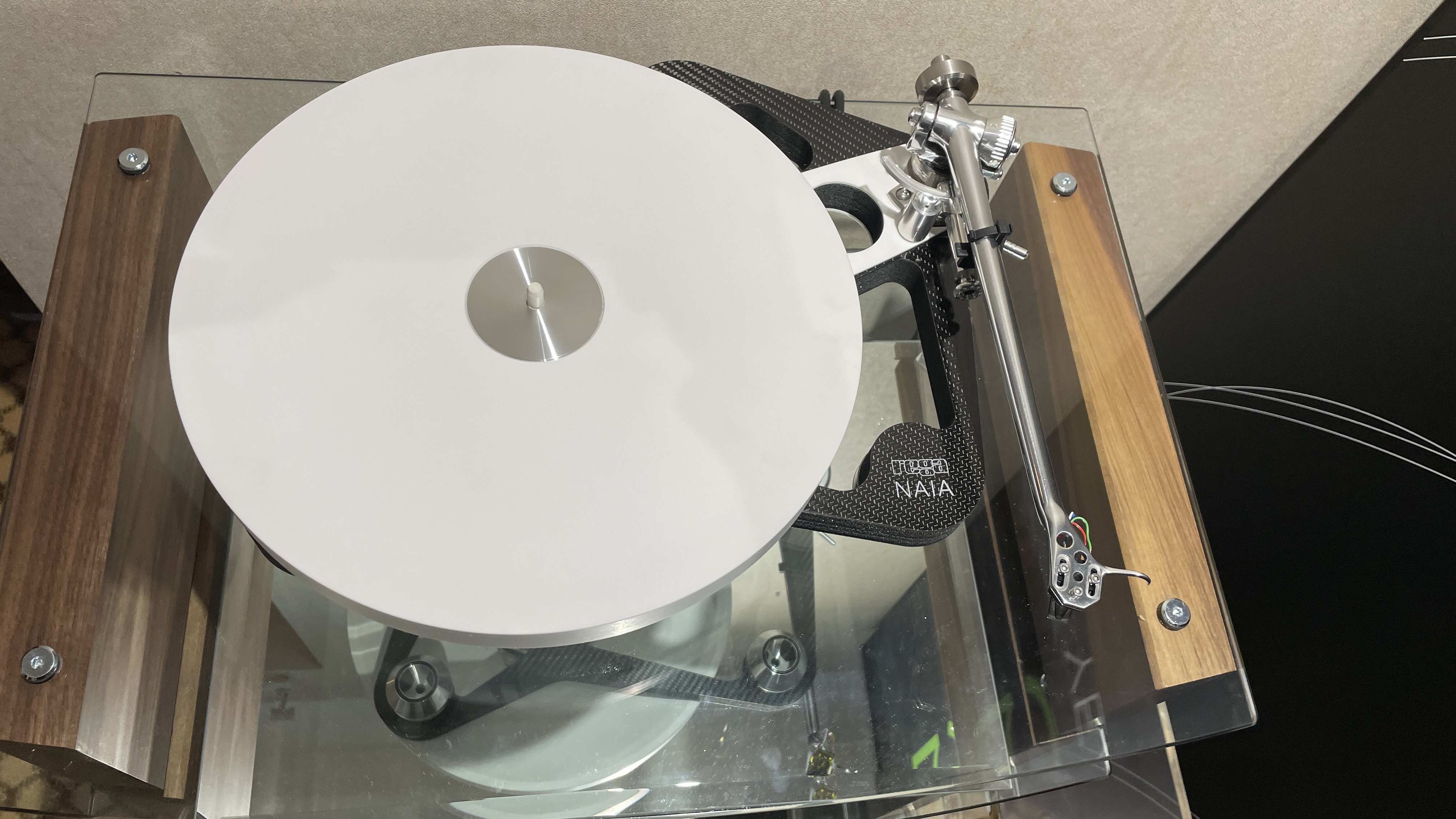Rega talks digitising amplifiers, the product it’s been happiest with for years, and what's next
In its 50th year, the revered British hi-fi brand is still nailing its niche

“For the past 10 years, I’ve been planning for dying,” says Rega co-founder and owner Roy Gandy, both amusingly bluntly and quickly in response to us asking what will define the company’s next 50 years. It isn’t Gandy being facetious, or indeed existentially bleak having woken up that morning of the interview on the wrong side of the bed (though his follow-up remark of “it could be tomorrow” may have been…), but more a reflection of his dedication to democratising the company so that it will seamlessly continue after he’s gone.
“That’s a major part of my life at the moment. Trying to set up a company that has the same ability to carry on making unusual niche products,” he explains. “We've been trying, for getting on for 30 years, to be a company that's got a different sort of management profile, i.e. no management. It didn't work for many years, and then for the last 10 it has clicked. We don't know why, but we do have a company now that is unusually collaborative… as close as you can get with zero hierarchy and zero authority.
“I think if Rega had been a difficult company now, I could have easily walked away and left it to the people at Rega. But it's become the opposite. For me, it's just the best time of my life.”
It’s a fitting time to celebrate the business’s seeming contentment, with the British hi-fi brand turning 50 this year (alongside fellow Brits Naim, Linn and QED, by the way; was there something in that early ’70s air? We muse the idea). The occasion has already been honourably marked by the company announcing at the Bristol Hi-Fi Show the creation of the Naia turntable, a production-ready version of the no-compromise, no-expense-spared (literally) Naiad deck the company set out to make from 2009 (more on that later). But perhaps just as (if not more of) a defining point in Rega’s recent history is its adoption of digital connectivity in its Elex and Elicit stereo amplifier designs within the last 12 months.
We sat down with Gandy, designers and engineers Ashton Wagner and Terry Bateman, and sales and marketing co-ordinator Simon Webster, to talk about that long-awaited transition, and more about the future of Rega (which we promise is not all about death).
Going digital
Asking the Rega team what made it decide to eventually ‘go digital’ was initially met with reminders that Rega has been ‘in digital’ for a while. Indeed, it dabbled with digital audio as far back as the early ’90s when it was in preparation for designing the first CD players that same decade, had produced the standalone IO DAC by 1998, and has occupied both of those product categories ever since, with the third-gen Saturn CD player (2022) and the DAC-R (2014) the most recent entries in those respective fields. Bateman remembered how he worked with chipset manufacturer Burr-Brown on ‘digital’ in that same period, when they were in the UK and before they were bought by Texas Instruments.
Naturally, our wayward question was intended solely within the realm of amplifiers, but it served as a good reminder of the company’s digital heritage, not least as, it turns out, it played a hugely influential role in the Elex and Elicit digitisation.
The latest hi-fi, home cinema and tech news, reviews, buying advice and deals, direct to your inbox.
But first and foremost, why only integrate digital now, when amplifier manufacturers have routinely included digital connections for years? While Rega amplifiers have consistently left our test rooms with glowing five-star reviews over the years, we haven’t had much choice but to write ‘no digital connectivity/inputs’ in the ‘Cons’ box of our reviews. But it seemed we couldn’t have possibly had both… until now.
“Rega’s predominant concept that we nearly all agree on is that sound quality is the major part of our being, and there are always the possibilities of a digital input affecting sound quality,” explains Gandy. “One of the reasons we've been able to do it now is that Terry and Ashton have worked out a way where it hasn't affected the quality at all.”
Retaining sound quality was one thing – a priority for Rega – but it was abundantly clear how determined Rega was to also offer digital without increasing the end cost to the customer. “Most of our customers are buying equipment because of the sound quality and the cost, and we too enjoy value and quality,” Gandy continued. “After many years of working in the digital domain, we are now able to produce a digital input that has hardly affected the overall cost [of the amplifier].”
Wagner explains how that was able to be achieved by taking some money out of the casework while making it look and feel better. “That budget was then able to be allocated to the digital components,” he said. As well as budget (and development time) constraints, Bateman and Wagner also worked hard to overcome limited space on the board and were careful not to detrimentally cramp the analogue circuitry.
As for customer demand – something we presumed might have played a big part – Webster confirms that the demand actually came mostly from the retailers and distributors.


DAC design
And so to the DAC design which, as we penned in our Rega Elicit Mk5 review, is a hybrid design that primarily borrows aspects from the company’s well-respected standalone DAC-R, as well as its Apollo and Saturn CD players. The DAC-R is getting on for 10 years old, but the company believes it was a very solid foundation to implement digital into its amplifiers. We ask how close the process was to lifting the DAC-R design and dropping it in.
“It's closer to lifting than not,” says Wagner. “But we view that as a good thing because a lot of work was done on that circuit. There are a lot of DACs now that, looking at the bare metrics, distortion and noise continue to go down. But from a musical performance standpoint, we still feel that's the best we can do; the performance of the DAC circuit in the DAC-R is superlative.”
Bateman expands: “The DAC-R was a digital milestone for us, as we were working directly with Wolfson when they were in Edinburgh, and with my analogue expertise and mojo, the DAC was developed. The core circuitry is essentially the same as the DAC-R, albeit with just one DAC IC [integrated circuit].” IC count is the main differential between the digital circuits in the amplifiers and those in the DAC/CD players, with the latter products (save for the cheaper Apollo player) having two DAC ICs that operate in parallel.
“[That] does improve the performance,” says Wagner. “A single DAC IC is a slightly cheaper implementation, and it may lose just a little bit of the sound quality, but it's about providing a product that gives you the best performance at that price level.”
Bateman also flagged that the analogue-only amplifiers do, of course, already have digital inside them – the PIC microprocessor that controls the input selection, volume control and remote. And he was able to apply that implementation to that of the DAC circuit.
He clarifies: “When I fitted digital control to the analogue amplifiers as far back as the mid-1990s, I made sure it was separated as best I could from the analogue circuitry, with isolated separate power supplies with their own winding on the mains transformer, so that there was minimal interaction between the digital power supplies and the analogue circuitry. Input switching is done by relays, and volume control by a motorised potentiometer which, by nature of how they work, ‘isolate’ the digital control circuitry and the analogue signal path. When I designed the combined DAC and analogue amplifier circuitry, I took the same direction, where it has its own isolated digital supply. I used the same microprocessor [that controls the input selection etc] to control the digital inputs.”

No USB...
Rega might have thought us rather ungrateful to have put ‘no USB input’ in the ‘Cons’ section of our Elicit Mk5 review – both the Elicit and Elex offer ‘only’ coaxial and optical on the digital side – but it is a feature that we, and we expect many others, enjoy using on amplifiers. And as USB is part of Rega products such as the Saturn player and DAC-R, it’s hardly new ground for the company. So why is it a no-show?
Wagner first noted that the historic complications around USB and Windows no longer being an issue would certainly help overcome some previous obstacles, now that Windows natively supports hi-res audio, but that there’s still more work – and cost – involved in getting USB onboard.
“You’ve got another complicated IC or a microcontroller,” he explains. “You've got to have the isolation between the USB and the rest of the products so that the noise from the computer power supply doesn't come into the product through there. So it's more components, more cost, more complexity.”
Going back to that all-important price factor, Webster adds: “We purposefully really aggressively priced the Elex, it should have been a couple of hundred pounds more really. But we decided to bring it out at that price, considering the times we're living through, and we wanted to maximise sales. And USB would be a step too far, to be honest. How many people would use it versus not buying it because it was a couple of hundred pounds more… that is always a consideration.”
Perhaps the next generations of the higher-ranging Aethos or Osiris amps will include USB if they too are digitised, but that in turn has us thinking about the other end of the company’s lineup. Will a future Brio or even the entry-level io get a DAC?
“It gets more difficult if we come back down to the lower-cost amplifiers because then a small increase [in manufacturing price] becomes relatively bigger,” replies Gandy. And Wagner agrees: “As you go further down the ladder, your budgets get tighter, things do get more challenging. I don't want to say we're gonna stop there and be done with it so we'll have to see how things unfold…
“For the io, trying to get as much of the Brio’s sound quality into something that was almost half the price… that was where all the time and effort went. Into taking money out of the casework and making the assembly process more straightforward. It almost didn't have a remote actually, we were that serious about trying to get the most sound quality we could at that price point.”

… and certainly no Bluetooth
At this point of the interview, asking ‘why no Bluetooth?’ feels a bit like putting our heads into the lion’s mouth, but we have to know. Yes, it is a cost thing, says Wagner. “It's expensive to implement, and not just on the hardware side, because you've got radios and antennae and very specialised ICs that perform all that functionality, but then you also have the regulatory side. Anytime you have a radio transmitter in a product, that brings up its own slew of problems with approvals of certifications everywhere… and we export to over 50 countries.” But even more so, it is a sound quality thing. “When I listen to Bluetooth on a hi-fi [system], I can hear the compression artefacts,” he continues. “It's a convenient feature, but I would rather go take my phone and plug my phone in via USB cable to the DAC and get uncompressed audio. It's a compromised medium. In its current guise, we've struggled to find the motivation to put it in. Now, the cost-performance ratio for us is not right.”
And then you get into what Wagner refers to as the ‘codec of the week’ issue. “We like to make products that work for decades, that people can use their whole life, and pass down even. When you start to get into the streaming and wireless world, because of the software, all these different parts of the puzzle are constantly changing – for reasons outside of manufacturers' control. The upkeep is a nightmare. We don't want to put a lot of expensive pieces into products that are not going to work in five, 10 or 20 years because technology has moved on.”
When customers ask about Bluetooth, Webster tells them that Bluetooth adapters work perfectly OK and can plug straight into the back of an amplifier, for £30 on Amazon. Or as low as “£8.99”, as Gandy chimes in!
CLASS D(unce)
Another trend that has emerged in entry to mid-range amplifier designs is a growing acceptance and adoption of Class D as opposed to traditional Class A/AB. Generally applauded for its notable efficiency albeit rebutted for its comparatively poorer sound quality, Class D has progressed in the latter department in recent years. And given the world’s increasingly stringent legal demands over things like power consumption, a fair few manufacturers are turning to Class D circuits. So is Rega looking to do the same?
“We have a prototype product at the moment that uses Class D… but it’s an acoustic guitar amplifier,” Gandy replies. “All of the things we don't use, we keep an eye on. We as a company have been looking at Class D amplifiers for getting on for 30 years, since they first started appearing. But ultimately it comes down to one thing: optimum sound quality. If it’s able to produce a sound quality that’s as good as we could make then of course we will use it. It’s not about the tool; it’s about the end result.”
When Rega started the io as a concept, Gandy’s perception was that Wagner was certain it would be a Class D product. But then Wagner changed his mind. “None of us has felt that there’s a Class D circuit we’ve heard that can better a good Class A/B or Class A implementation,” he says. And Bateman feels the same: “I’ve heard some cracking Class D circuits, but they just don’t cut the mustard in the end. You can take a traditional Class A [A/B] circuit and fettle and improve it – however, in my opinion, this can’t really be done to a Class D circuit in the same way. A traditional Class A [A/B] circuit is organic in nature, whereas Class D can be seen as synthetic. You just have to look at the popularity of the ’old-school’ analogue amplifiers!”
Bateman suggests this Class D shift could have an impact on the readiness of analogue amplifiers and the ability to continue their progression in the future. “Modern’ analogue semiconductor amplifier design is now 60 years old and what can be done has been done,” he tees up. “But saying that, there are nuggets to be found in designs that never came to fruition as far back as 50 years ago, though the ‘nugget’ cupboard is getting decidedly bare. The ‘old’ designs can be improved upon using ‘modern’ components, but the downside to this is that the commercial semiconductor industry is moving away from traditional semiconductors for the analogue amplifier industry and focusing on semiconductors for Class D topologies. Some semiconductors are getting as hard to find as some valves!”
Bateman’s comments serve as a good reminder that some manufacturing decisions are indeed out of hi-fi companies’ control due to a lack of parts – something that might well determine how long we see Rega produce CD players for, for that matter.
“We would like to carry on making CD players if we can make one or some as good as what we've made before,” says Gandy. “But there’s a problem: we had an exclusive chip and we're getting close to running out of that in the next few years. And [it depends on] if we can still get transports. We couldn't make one – no one can make a transport apart from a large multinational. We're very much in the hands of computer chip manufacturers. It’d be very easy for us just to make another CD player the same as everyone else's, but we don't want to do that.”

Nice & niche
If regulations, parts accessibility or indeed anything else does force Rega’s hand, it will do the best with what it can. Or, as Gandy suggests, it could venture down a different path entirely – a different market altogether. “We're trying to make a nice corkscrew,” he declares, before continuing in advance of any eyebrow-raising reaction: “That could be a much bigger market than amplifiers! Anyone who has used a corkscrew knows there is no such thing as a perfect corkscrew. There are always problems with every type. We have a little idea that maybe, if we can get everything together, could pull the cork out a bit better…” So there you go, Rega in 2024: a manufacturer of hi-fi and corkscrews.
While perhaps an ironic statement to follow that reveal, Rega clearly knows its niche and is proud of it. Webster puts the company’s success down its ability to “stick to what you are good at”. “We've always stayed focused on what we're best at: two-channel audio,” he says. “When 5.1 came along, we were told many a time that we'll be out of business if we don't do a processor, centre channels… so we made a big decision to avoid that, and that's why we're still here and doing really well.”
Gandy offers his own rumination on Rega’s niche position. “Most people in the world would think we're crazy, most people in the world probably wouldn't hear a difference between a phone and a hi-fi system,” he says. “We're talking about very, very subtle differences that they would perceive between two high-quality amplifiers. We’re saying there are huge differences, and I think you do as well. But there are people who don't see a difference.
“It's about certain people's perception of quality, and I fully understand that it’s not important to many people. Some people eat food just to fill themselves up; for me I feel unpleasant if the food doesn't taste nice, and I feel elated if it's just nice-tasting food, and that can create a mood change in me. And music is the same. Most music is banal – there's lots of it, anyone can just plug away and play something. But that's not a communication of their feelings or their souls. When someone can start to communicate how they're feeling, using music in a way that they can't do in words or painting, and that communicates something to me or some people, that's the bit of music I'm looking for.
“And all reproduced music can't do that. It's much easier to get that little bit of communication from live music than from reproduced music, though there’s still a lot of really banal live music and there’s mostly banal reproduced music. But there is this little tiny percentage that has the ability to move people – the ability to cover, in both a recording and in reproduction, that little something that a musician is trying to convey. I guess that's the area that Rega is in.”
The next 50
And so we come back full circle to Rega’s future, the more immediate of which will be somewhat defined by its launches during this anniversary year. Perhaps the biggest has already been revealed (or not, who knows!) – the Naia turntable. “It's one of the products that the whole company is happiest with for many, many years, so we're very, very happy,” says Gandy. Not a bad start to a milestone year then! The company may well add DACs to other amplifier models as the time comes for them to enter their next generation. And we’d love to see an even better RP3. Maybe it will even launch the world’s most effective and user-friendly corkscrew. But in the longer term, over Rega’s next 50 years, what will define the company is ultimately, it would hope, success. Wherever that indeed comes from.
“The thing that defines people always comes once they've done it,” says Gandy. “It’s retrospective, and it's not always possible to plan. So we don't know what will define us. And what's defining us now isn't a marketing plan, it's what's come about because of all of our personalities and taking opportunities.
“We certainly have the right management set-up now. What we need is a lot of the younger people like Ashton [Wagner], who are really taking a lot of responsibility and coming up with some wonderful design projects. I think we need them to also be able to see outside of the box because hi-fi could just finish. Just like that. The concept of turntables can finish just like that. There are so many things that could stop turntables happening. There are so many things that could stop amplifiers as we make them happening. And in the past we've made all sorts of other products, we have proved we can do it. But we need people in the company that are flexible enough to find niche products that we can make better than other people at lower prices using their abilities. We have extreme abilities in engineering, and cost-effective engineering. And we've got some extreme brains within Rega. It's just being able to be flexible enough so that within months they could come up with something different.
“All I can do is try and create the best possible scenario for the longest possible life as I see it now. But once I'm dea…” No, we promised no more talk of demise! So let’s instead conclude with the quote from our talk with Rega that is perhaps closest to the company’s mantra over its past, present and, most likely, future, as expressed by Wagner: "We make stuff here in the UK that offers the absolute most sound quality we can give you for a given budget – at the expense of all else. I've always seen that as Rega’s defining characteristic. I think that's what differentiates us from some of the competition."
MORE:
Read our British Hi-Fi Week news, features and reviews
Castle Windsor Series loudspeakers are born and bred in Britain
An interview with Rega's Roy Gandy: "I don’t think I’ve ever been interested in hi-fi"
Read our Rega reviews
The best record players and stereo amplifiers you can buy

Becky is a hi-fi, AV and technology journalist, formerly the Managing Editor at What Hi-Fi? and Editor of Australian Hi-Fi and Audio Esoterica magazines. With over twelve years of journalism experience in the hi-fi industry, she has reviewed all manner of audio gear, from budget amplifiers to high-end speakers, and particularly specialises in headphones and head-fi devices.
In her spare time, Becky can often be found running, watching Liverpool FC and horror movies, and hunting for gluten-free cake.
